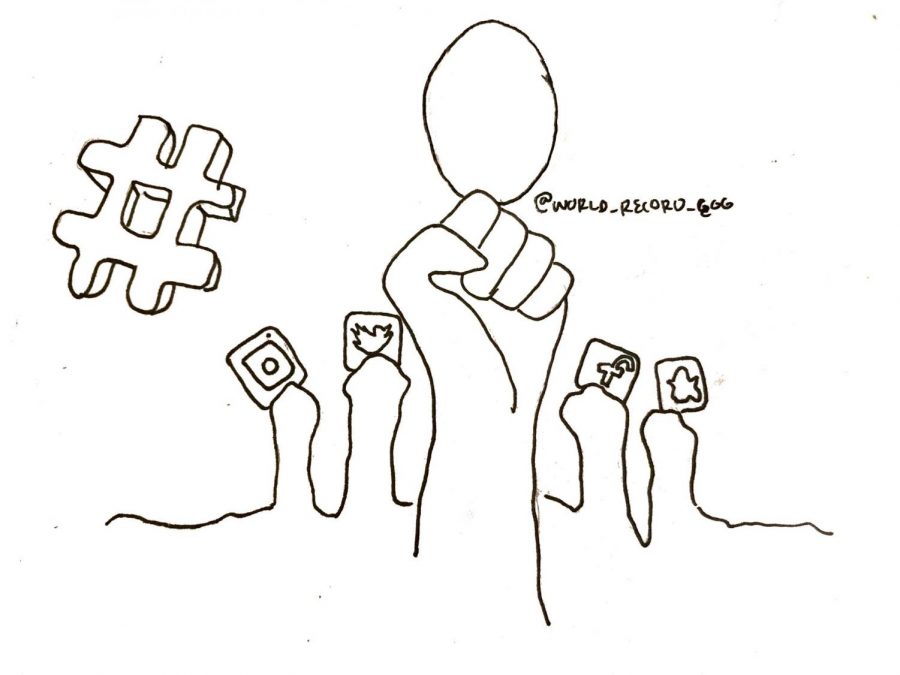The use and abuse of social media
February 6, 2019
According to a recent Redwood Bark survey, 79 percent of students self-reported their primary use of social media is for simple entertainment. Meanwhile, according to the same Bark survey, only four percent use social media as a news source and eight percent use social media for some sort of activism.
At the beginning of January, Instagram users rung in the new year by liking a picture of an egg in order to beat the record number of likes on a single Instagram picture. This photo of an egg beat the previous world record holder, a photo posted by Kylie Jenner that has 18 million likes. The egg photo has now racked in 51,077,586 likes since it was first posted on Jan. 4. The photo also has 2,993,424 comments and the Instagram account—which now has three posts, all just pictures of a single egg—has nine million followers. There are T-shirts being sold, an app you can download, companies curating advertisements and a Wikipedia page to try to explain the entire phenomenon to people like me who cannot comprehend why over 50 million people care about this picture of an egg.
This viral sensation, one that I will once again emphasize is simply a picture of an egg, like the one that a chicken makes, made me think about the current use of the social media platforms available. Nearly a year ago, after the Parkland shooting, a social media frenzy erupted in order to shed light on guns in America. Similarly, the #MeToo trend, which without social media would just be “poundMeToo,” came about after Harvey Weinstein had multiple sexual assault allegations made against him.
Social media activism, like in these special circumstances, is often fleeting. We want to feel like we are a part of something, like we can make a real change in the world. And in hoping to do so, we put a French flag filter over our profile photos to show support after the 2015 Paris terrorist attack or use hashtags to commemorate significant moments in history.
All of these actions have perfectly good intentions and I do not want to discourage attempts to join an activist movement over the internet in whatever capacity it may be. However, I do want to encourage more immediate and hard-hitting activism. According to Pew Research, 69 percent of Americans think that social media plays an important role in getting elected officials to pay attention to issues or creating sustained movements for social change. To me, the important word in that sentence is “sustained.” People are more than willing to join a movement with the click of a button, but the longer the commitment to the movements lasts, the shorter the attention span of the people becomes.
We only have a certain amount of activism stamina in us, or at least I know that I do. I think that we want to feel like we are part of something monumental, something historic. So we double-click a photo of an egg because it immediatly involves us in a world record; we post photos in support of school shooting victims because it makes us feel that we are supporting people from afar, which to a certain extent, we are. But in the end, it’s the longevity of the these movements that matter.
Nevertheless, it seems impractical to be able to switch the statistics around, making it so the majority of students are using social media to have their voices heard, while the rest of the percentage is left for simple entertainment. I don’t think it is feasible to ask teenagers, or any age group for that matter, to completely alter the way they use social media, especially when the majority of it is geared toward endless scrolling.
However, what doesn’t feel like an impossible task is to switch mindsets. According to Pew Research, in 2018, 77 percent of adults use their social media daily and 70 percent of adults feel that social media has positively affected society. For this reason, I don’t want people to stop using social media—I want people to start using it to their advantage, and to society’s advantage. If the majority of adult Americans already believe that society is benefiting from social media, we need to prove them right.
Social media has the power to reach a wider audience than arguably any other platform ever created. Depending on our outlook, our confidence in social media and what it can do for us, it has endless potential to make real, tangible change. So, join a Facebook group in support of the people still suffering from the Flint water crisis, retweet Twitter links that let people know how they can stand with victims of sexual assault all over the world, sign an online petition to help slow the rapid rate of animal extinctions. But once you’ve made that simple contribution, try not to make it a one-time thing. If we play our cards correctly, sitting idly by isn’t the only option. Social media doesn’t have to be all FOMO and disappointment. If an egg can make it big, so can your activism.








